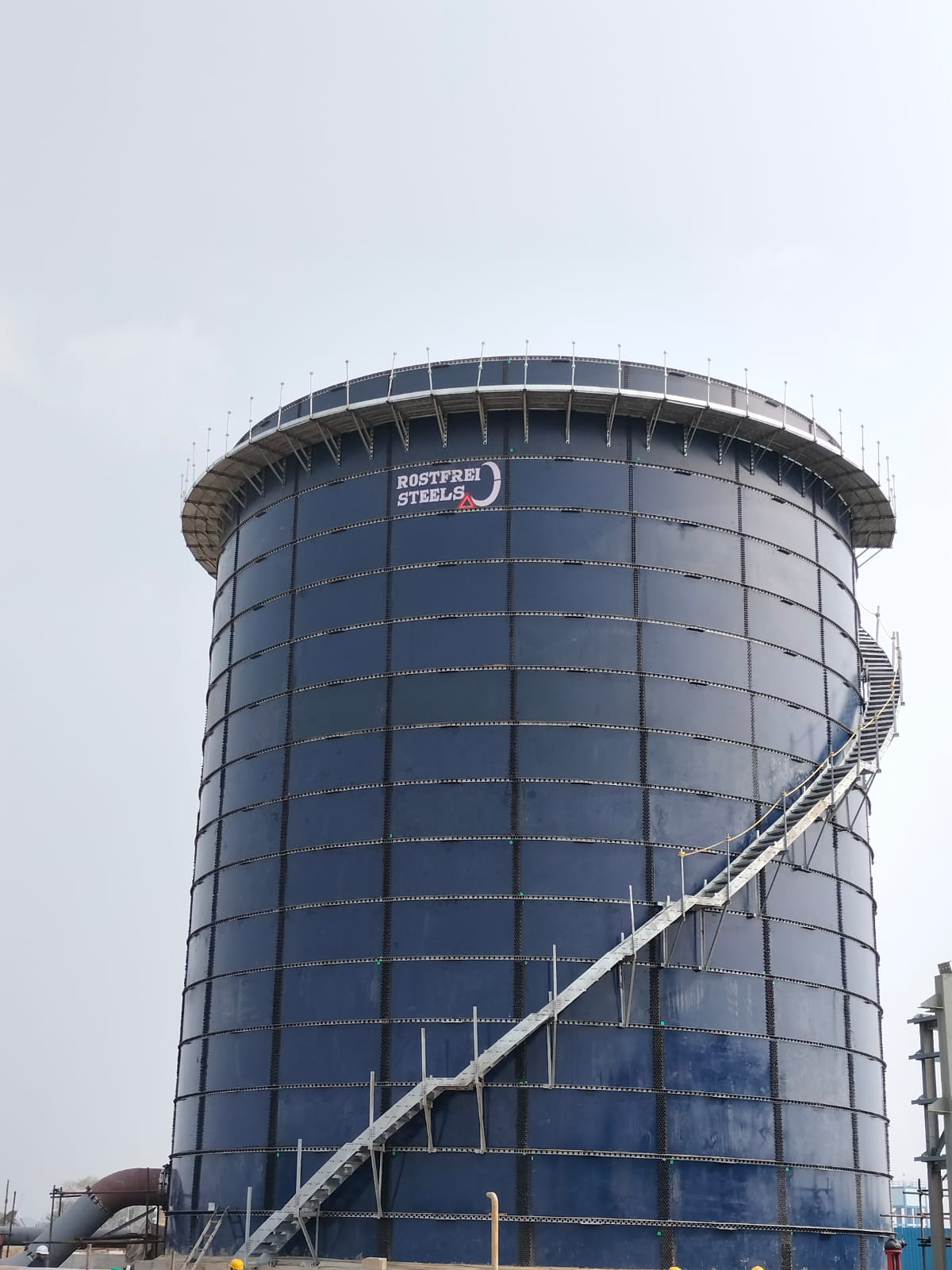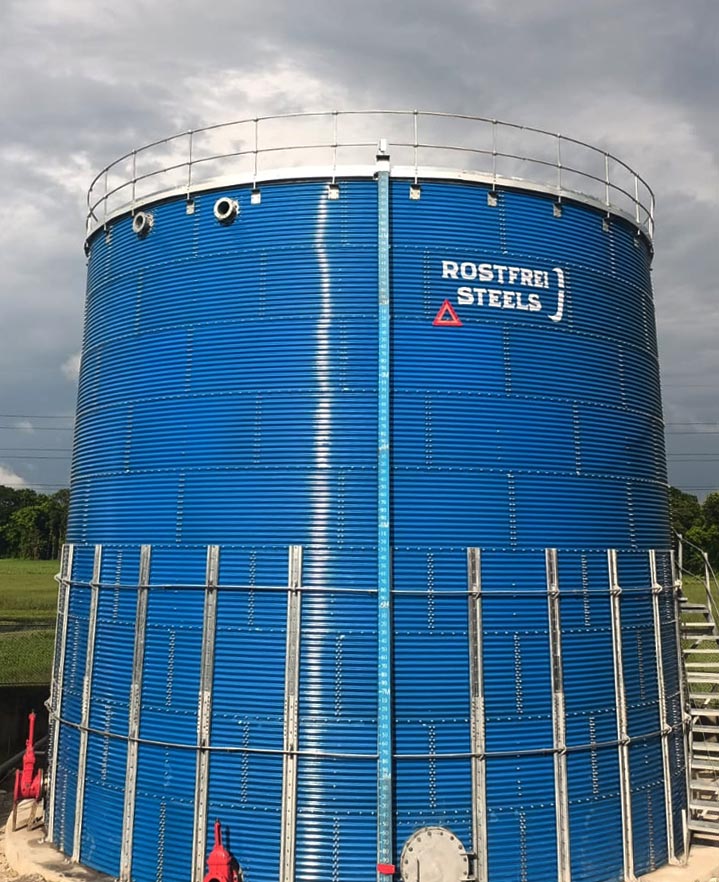We use a state-of-the-art process to apply Resicoat Epoxy coating to mild steel sheets to prepare our Fusion Bond Epoxy Tanks. This cutting-edge technology enhances the intrinsic properties of steel, significantly improving its durability and performance. Bare steel is vulnerable to corrosive environments, but the epoxy fusion process fortifies it, extending the tank’s lifespan. Once fused, the epoxy coating elevates resistance to atmospheric weathering and corrosion, while broadening the acceptable pH range for the tank’s contents. FBE-coated tanks are versatile, making them suitable for storing a wide array of liquids, including potable water, wastewater, organic waste, and oils etc.
Rostfrei offers two variants of Fusion Bond Epoxy (FBE) Tanks:
1. FBEC Tanks (Rostfrei Patented Technology) with Liner – Corrugated Sheets
FBEC (Fusion Bond Epoxy Corrugated) liner tanks feature corrugated steel sheets where joint sealing is achieved using specialized nuts and bolts. Water is securely stored within a membrane liner bag fixed inside the tank shell, making these tanks suitable for heights up to 12 meters.
Sheet thickness ranges from 0.8–1 mm up to 2–2.5 mm, with higher thickness achieved through a sheet fusing process.
These tanks are typically installed and grouted on a reinforced concrete ring beam foundation, compacted and filled with sand at the center to enhance stability and support. This construction method provides an economical and reliable storage solution.
The internal liner serves as a protective barrier, shielding the tank from chemical reactions, corrosion, and external contaminants—significantly extending the service life of the tank.

2. FBE Tanks with Sealant – Plain Sheets
These Fusion Bond Epoxy tanks are constructed using plain steel sheets. Sheet joints are sealed using specialized nuts and bolts in combination with a PU sealant, creating a fully leak-proof system. These tanks are suitable for installations up to 25 meters in height.
Sheet thickness varies between 2 mm and 24 mm, depending on the tank’s design and structural requirements.
FBE tanks are installed and grouted on a full circular reinforced concrete foundation with integrated waterproofing, ensuring long-term durability.
The Fusion Bond Epoxy coating enhances resistance to harsh environmental conditions, providing excellent durability and making both FBE and FBEC tanks ideal for industrial, municipal, and agricultural applications where longevity and reliability are essential.
The Design Standards followed for FBE / FBEC tanks –
AWWA D103-09: This standard is published by the American Water Works Association (AWWA) and provides guidelines for the design, construction, and inspection of bolted steel tanks for water storage.
AS-2304:2019: is an Australian standard that focuses on the design and construction of above-ground and underground storage tanks for liquids.
Adhering to these standards ensures that FBE/FBEC tanks meet the necessary safety, quality, and performance criteria required for various water applications. Compliance with standard code also helps ensure consistency and interoperability in the design and construction of FBE/FBEC tanks across different projects and locations.
A brief process of creating Fusion Bond Epoxy (FBE) tanks involves several precise steps to ensure the quality and integrity of the finished product:




Here’s an overview of the typical quality check process –

A. Top-to-Bottom Assembly
B. Adding Rings & Accessories
C. Anchoring
1. Dome Roof – ZA / FBEC
2. Conical Roof – ZA / FBE / GFS
3. PVC Double membrane liner roof
4. GFS fixed leakproof roof
5. Geodesic Roof




A. Top-to-Bottom Assembly
B. Adding Rings, along with Liner & Accessories
C. Anchoring

Fusion Bond Epoxy Tanks offer extensive applications across various application & industries. Some are mentioned below:
Rostfrei GFS tanks are available in three colour options.

Rostfrei Steels stands at the forefront as a premier manufacturer and trusted supplier of high-quality Storage Tanks, Storage Silos, and Material Handling Equipment. Expanding our innovative product range and service capabilities, we now also offer Pre-Fabricated Shed Buildings and Hot Dip Galvanizing Coating services through our newly established, state-of-the-art plant—delivering excellence you can depend on.

Rostfrei Steels is a head most manufacturer & supplier for Storage Tanks, Storage Silos & Material Handling Equipment.